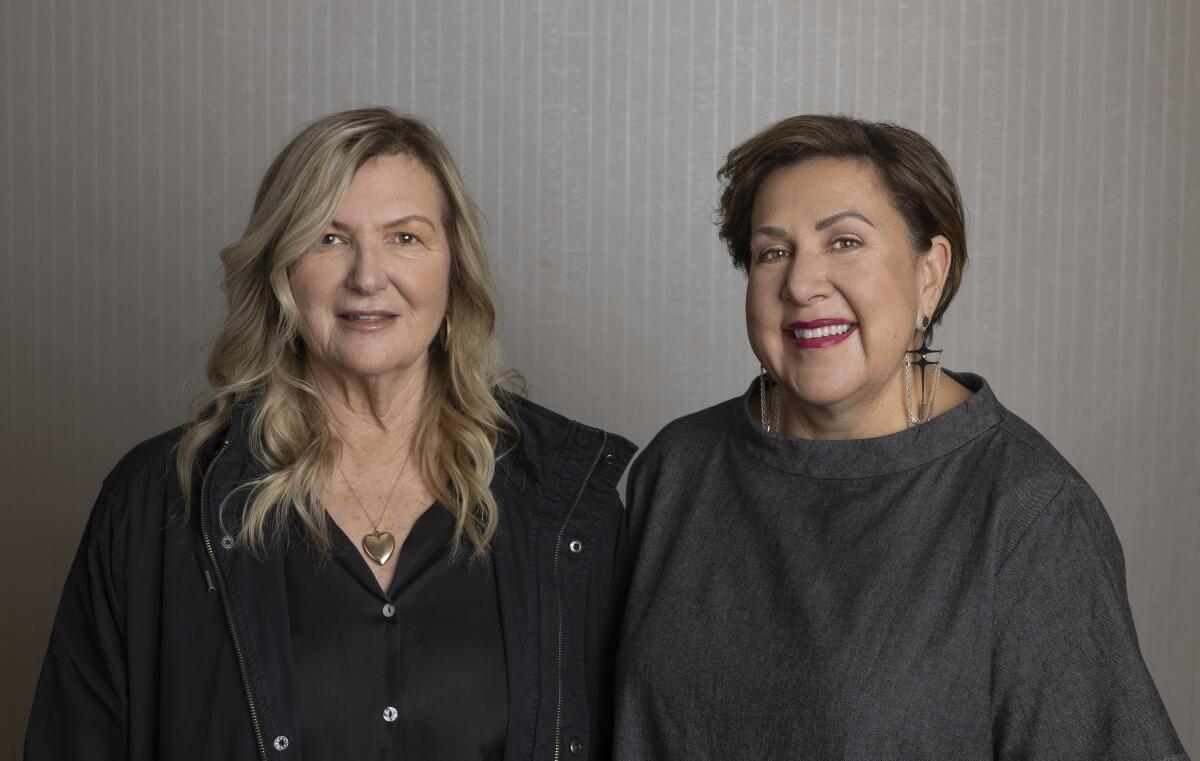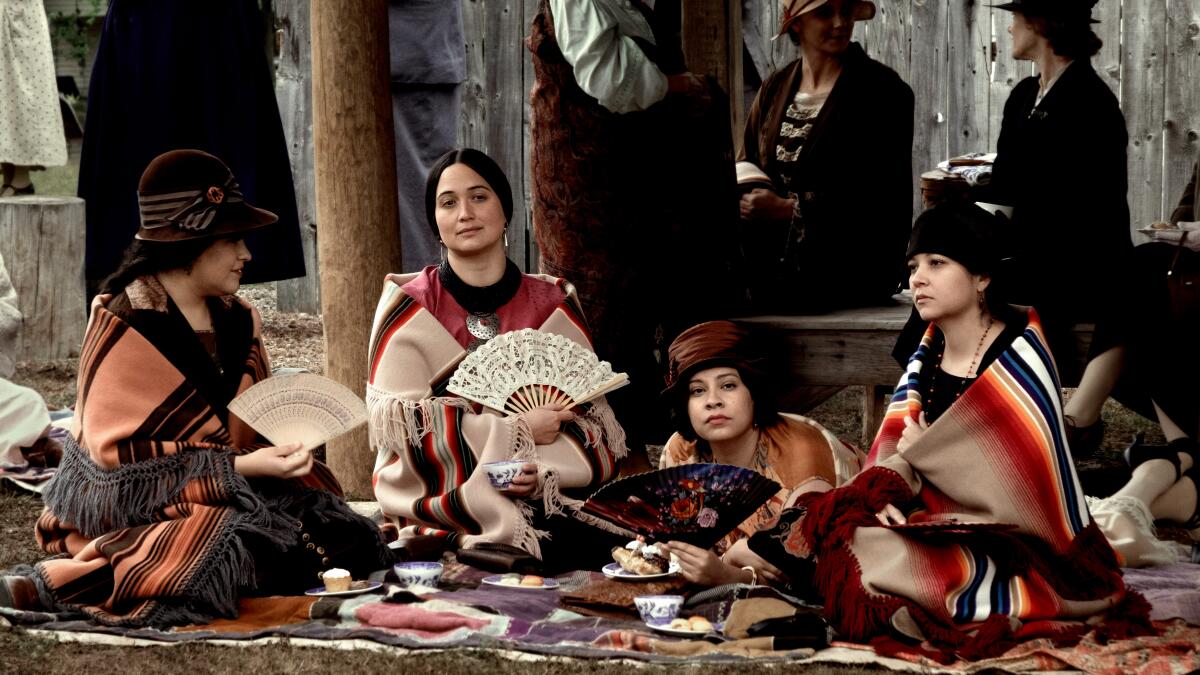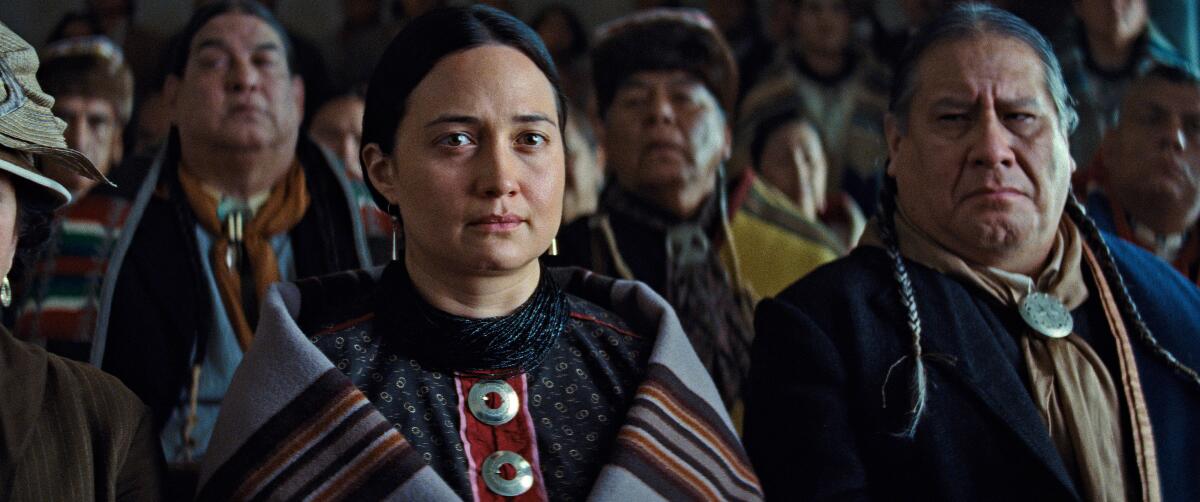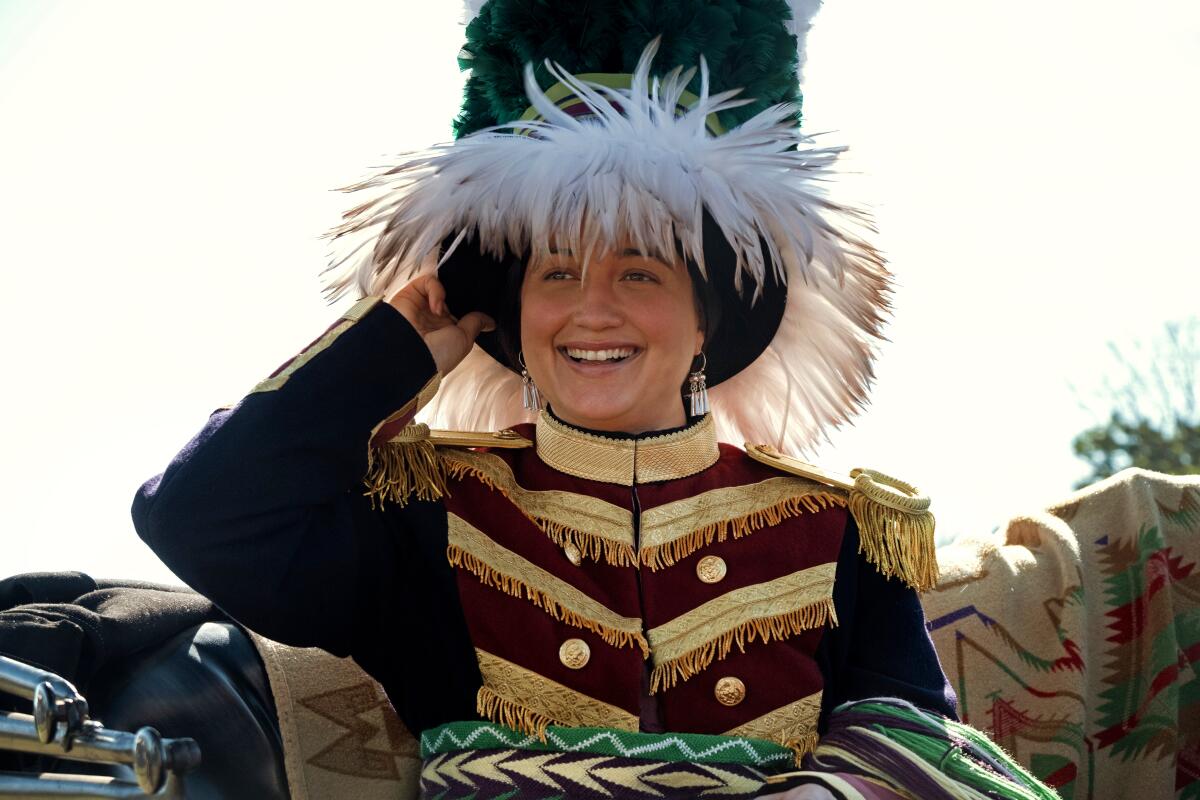Sign up for The Envelope
Get exclusive awards season news, in-depth interviews and columnist Glenn Whipp’s must-read analysis straight to your inbox.
You may occasionally receive promotional content from the Los Angeles Times.

Through years of studying historical photos, home movies, museum collections and archives, the filmmaking team of director Martin Scorsese’s “Killers of the Flower Moon” resurrected a community of Osage people living in 1920s Oklahoma. The process did more than re-create characters in David Grann’s nonfiction book of the same name; it also helped to revive parts of the Osage culture, including the making of authentic clothing.
The film recounts a period known as the Reign of Terror, when at least 24 Osage were murdered in a conspiracy to get their mineral rights. As riches from oil on their land made them among the wealthiest people per capita in the world, the Osage acquired luxurious homes, cars, clothes and a dangerously enviable lifestyle. The story traces how white men Ernest Burkhart (Leonardo DiCaprio) and William Hale (Robert De Niro) collaborate in the killings, even getting Burkhart to wed an Osage woman, Mollie Kyle (Lily Gladstone), in order to inherit her oil rights after killing her.
The filmmakers met with tribal representatives to understand Osage traditions and how the murders decimated families and weakened a community and culture. Costume designer Jacqueline West, a four-time Academy Award nominee, added Osage art consultant Julie O’Keefe of Tulsa to her costume department to help bring the period to life and locate artisans to make elements of the film’s wardrobe.
West, an art historian by training, spent part of the pandemic lockdown amassing images of the Osage and sample garments from the era before production began in Oklahoma’s Osage and Washington counties in 2021.

“Fortunately, the Osage were wealthy enough to document their lives. The only people in the 1920s who could afford home movies were the Osage and probably the royal family of England. It was $1,800 a minute,” said West, who found images of the Osage playing golf, shopping in Paris and documenting their children at Ivy League schools.
“There were also so many fabulous studio shots of them, because they could afford that, too. There were many wonderful details that you don’t often get from this period,” she said.
Leonardo DiCaprio, Robert De Niro and Lily Gladstone star in Martin Scorsese’s ambitious adaptation of David Grann’s book about marriage and murder in 1920s Osage country.
Yet numerous family portraits, heirlooms and the attendant stories of that era were buried as part of a harsh history.
“I think when you have genocide happening in any culture, all of a sudden it’s, ‘Lets don’t talk about this; let’s don’t bring attention to what we have.’ It was too painful and it was too frightening,” O’Keefe said.
As the film was being shot in rural areas of Oklahoma, trust and curiosity grew about the process. West’s costume team asked community members to bring family artifacts to an airplane hangar for socially distanced viewing in a car “trunk show.”

“This is the part that turned this epic film into what felt like to everyone a community project. People are driving up, opening up their trunks, and they’re pulling out their family treasures,” O’Keefe recalled.
“These were museum pieces that people wanted to share and let us use in the movie,” said West, who copied items and employed local artisans to make traditional finger-woven belts, complex ribbon work appliqués and silver jewelry.
Silversmith Kugee Supernaw made the wabonkas, the round, silver ornaments Osage women threaded onto their blouse necklines.
“If you wore three of them, you were single. If you wore two, you were married. If you wore one of them, you were a grandmother. So it’s something to watch for in the movie to see where people are in their lives,” said O’Keefe. Many women in the film also wear Czech seed bead necklaces that were trade items that came to be “a symbol of luxury in our clothing,” O’Keefe said.

As the Osage encountered more outsiders, their clothes reflected the influence. In the film, a marriage ceremony shows several women in the wedding party wearing American military coats trimmed with traditional adornments.
The coats are believed to have originated at an 1800s meeting with Thomas Jefferson, who gave an Indian council member his coat, which didn’t fit the typically tall, broad-chested Osage. Over the years, more coats were traded, and the Osage redecorated them, passed them to their daughters and a wedding tradition emerged.

To source nearly 500 native blankets, West consulted the archives of the Pendleton Woolen Mills. The Oregon company made the authentic reproductions — including 1920s labels. She found period cowboy hats made on antique forms and presses at South Dakota’s Weather Hat Co.
While still in lockdown, West asked Diana Foster, owner of United American Costume Co. in North Hollywood, to ship her items from the company’s archive of authentic Western garments of the period. West selected pieces to inform costumes for DiCaprio and De Niro, and Foster’s tailor made the reproductions.
The filmmakers checked the authenticity of their depictions of ceremonies and tribal dress with members of the Osage community and found that some of the specific practices from 100 years ago “have been taken out of their experience. They were learning to put their culture back together through this movie,” Scorsese said in a recent appearance.
The film has become a catalyst for discussion, community screenings and, finally, for confronting a dark chapter.
“One of the things I have been grateful for with the movie is it is now allowing conversations to happen, generations later,” O’Keefe said. For West, the experience was not only like time travel, but also a reminder of history’s prejudices: “You don’t learn this story in school.”
Sign up for The Envelope
Get exclusive awards season news, in-depth interviews and columnist Glenn Whipp’s must-read analysis straight to your inbox.
You may occasionally receive promotional content from the Los Angeles Times.